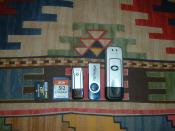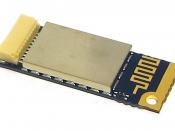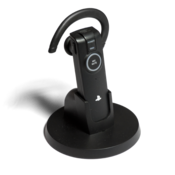Sheena Leek and George Christodoulides explore consumer receptiveness to Bluetooth delivered advertising in their paper titled, 'Next Generation Mobile Marketing: How Young Consumers React to Bluetooth-Enabled Advertising'. Research was primarily based on a five-point 'Likert item' survey designed to assess the frequency of use of Bluetooth applications amongst young consumers, the motives for use, attitudes & perception of young consumers towards mobile advertising and in particular towards Bluetooth. The study also examined the influence of peers on respondents' behavioral inclinations. Secondary research indicated that consumers in the 19-29 years age group were the most accepting of mobile marketing and the most receptive to new technologies. Accordingly, the survey sample consisted of individuals from this age group, of which 54% were students, 44% were employed and 2% unemployed.
The study revealed that a significant percentage of respondents (close to 40%) with Bluetooth-enabled mobiles had never used this application.
The survey validated that respondents were however accepting of text & Bluetooth enabled advertising and that consumers were, in particular, receptive to personalized messages. Respondents showed a strong preference for having the option to receive or stop receiving advertisements. As with other studies on mobile marketing, this study confirmed that privacy and security of information are a major concern amongst consumers; as a result, consumers pay importance to the reputation of the mobile advertiser. An important finding that could perhaps pose a challenge to marketers is that peer pressure and the opinions of peers play a key role in influencing respondents' use of the Bluetooth technology.
Managerial ImplicationsThe advantages of deploying a Bluetooth enabled marketing strategy are clear; images, documents, audio files and videos can be easily transmitted thus allowing advertisers to invoke subliminal priming. Further, Bluetooth enabled advertising could be particularly useful and effective when customization based on geographical locations of market segments are called for. Mobile marketing and Bluetooth enabled marketing are also conducive to evoking customer engagement through advertisements that encourage customer response. Another obvious but nevertheless important implication of this study is that mobile marketing, particularly Bluetooth-enabled marketing should be used only when marketing products and services that are relevant to individuals from the 19-29 years age group.
As stated previously, the study revealed that several of the respondents surveyed did not use the Bluetooth technology even though they had access to it. This could perhaps be a reflection of an incomplete understanding of Bluetooth functionality. Marketers may then need to consider using overt modeling techniques atleast initially to encourage the use of this technology. Further, given that the reputation of the advertiser plays an important role in consumer receptiveness to mobile and Bluetooth enabled marketing, marketers should choose to use this method of advertising only in those markets where they have established their brand and reputation. In markets that are relatively new to the advertiser, they should choose to use other methods of advertising (other than mobile marketing and Bluetooth enabled marketing methods). Another survey finding was that consumers were willing to receive mobile advertisement upto once a week. Given that this medium of communication is fairly personal, transmitting marketing messages via the mobile more than once a week runs the risk of being seen as an invasion of personal space and causing frustration/annoyance amongst consumers. In this sense, this medium of advertising limits the frequency with which marketers can reach out to their target audience.
An important finding of the study is that peers are seen to have a significant influence on consumer use of technologies such as the Bluetooth application. Marketers should consider using elements of social proof in their general advertising of the Bluetooth technology. Inviting customer response to Bluetooth enabled marketing messages is also likely to increase information sharing amongst friends or peers.
Work CitedSheena Leek and George Christodoulides:'Next Generation Mobile Marketing: How Young Consumers React to Bluetooth-Enabled Advertising'





